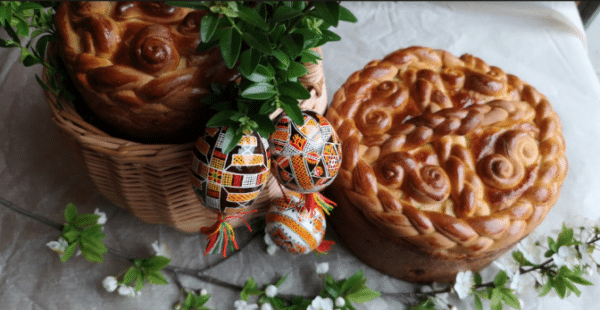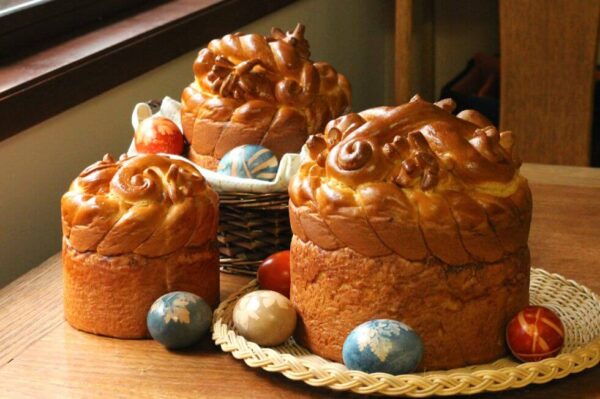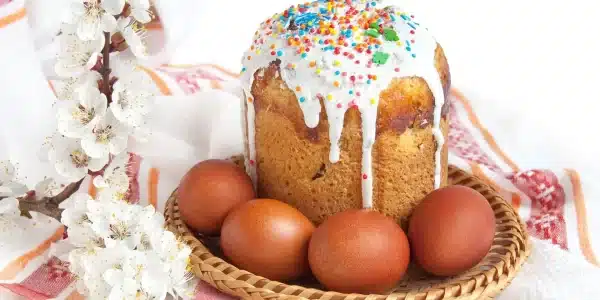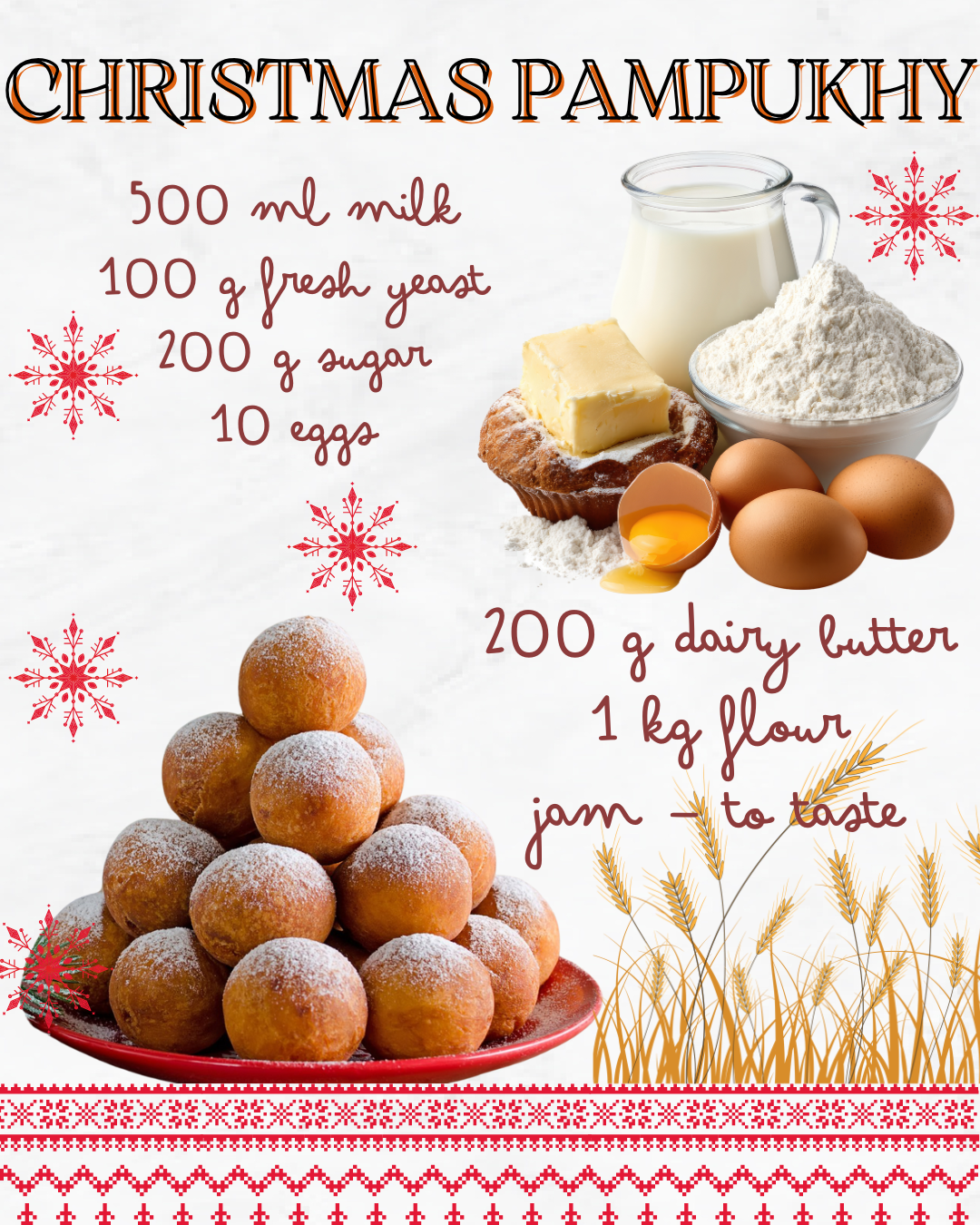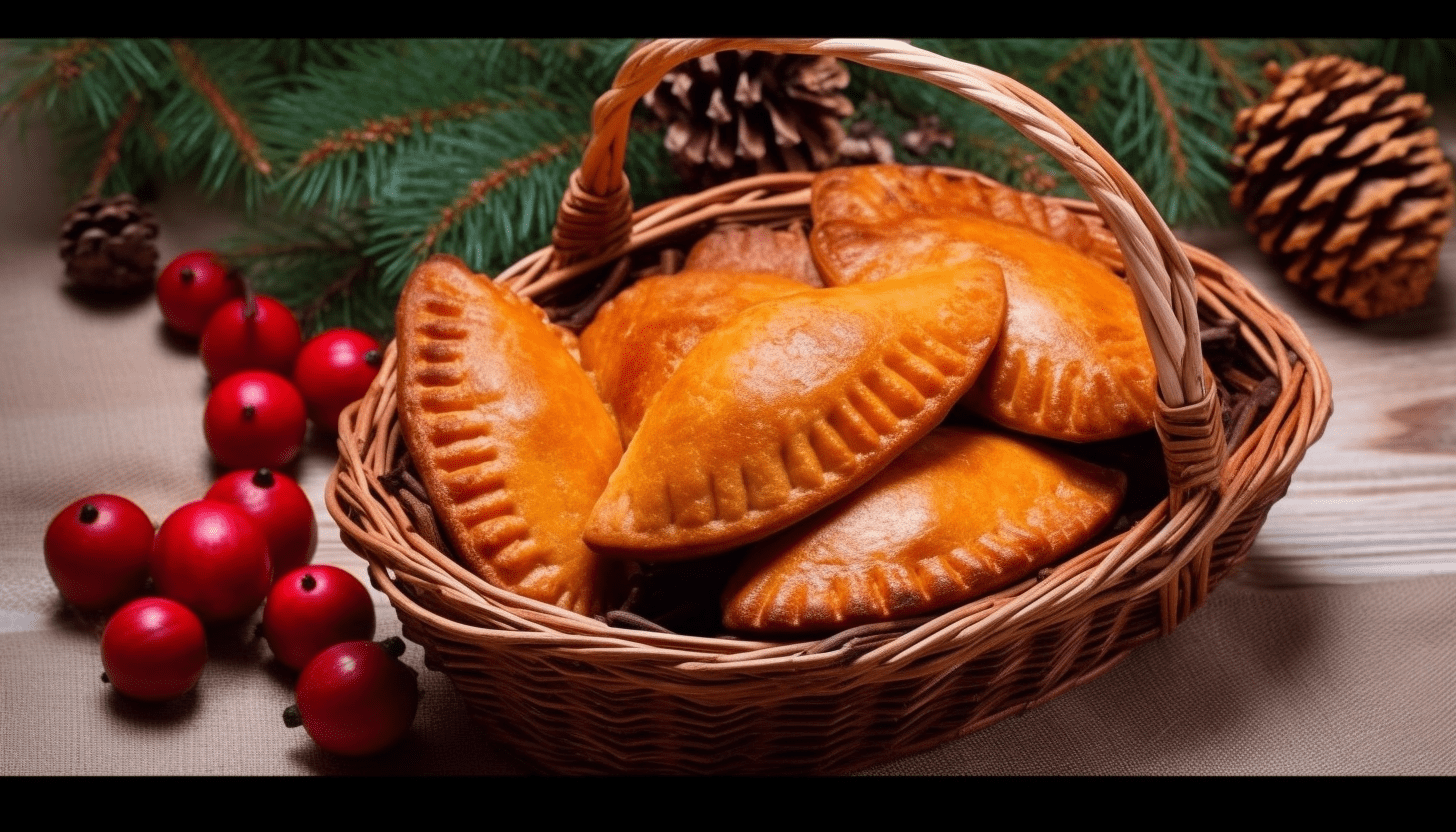Easter in Ukraine is a cherished family holiday steeped in tradition and heritage. Families come together around the festive table, exchanging Easter greetings and sharing traditional Easter eggs (pysanky and krashanky). Culinary customs, too, reflect this deep familial connection, with recipes passed down through generations.
In Ukrainian households, it’s a common practice to preserve and pass on recipes from ancestors. Many families treasure dishes prepared the same way by their grandmothers and great-grandmothers over a century ago. This tradition serves as a source of inspiration and reinforces the bond with forebears.
Today, we journey to the Ivano-Frankivsk Region for culinary inspiration. We present three recipes for Easter Paska from different parts of the region. Each recipe, handed down through generations, carries with it a rich history and a unique cultural significance.
Paska cooked using lard (Ukrainian smalets)
Originating from the village of Utoropy in the Kosiv district, this Easter bread recipe has stood the test of time. It is not known how many generations this recipe has been preserved, but the fact that it has been preserved for a long time is a fact. This recipe is designed for 9 large pasky, and has a neutral-sweet taste, so it is consumed even with salty dishes.
Ingredients:
- 18 eggs
- 500 ml vegetable oil
- 1000 g sugar
- 40 g dry yeast (80 g pressed yeast)
- 100 g lard
- 3 liters whey
- 4 kg flour (approximately)
- a pinch of salt
Cooking
1. Combine and mix dry ingredients: ⅔ flour, sugar, and salt. Add all the liquid ingredients and knead the dough.
2. Knead the dough, adding a little flour. The exact amount of flour depends on many factors, so add it gradually. Knead the dough until it no longer sticks to your hands, then let it rise a bit.
3. Knead the dough again and let it rise. After that, you can start forming pasky.
4. Divide the dough into equal parts and wrap each part into a ball. Arrange them in the forms so that the dough occupies no more than a third of the entire form. From above, you can decorate pasky with thematic dough products, such as dough crosses or willow twigs.
5. Leave the formed pasky to stand. Then brush them with a beaten egg and put them in the oven to bake. The optimal temperature is 180°C, the time is up to 45 minutes.
Paska with ground cloves and raisins
This recipe originates from Seredniy Maidan village in the Nadvirnyan district. Known for its delicate balance, this Easter bread isn’t overly sweet, making it a versatile option that pairs well with both main dishes and desserts.
Ingredients:
- 1.5-2 kg flour
- 3 liters milk
- 20 g dry yeast (40 g pressed yeast)
- 6 eggs
- 200 g sugar
- 200 ml vegetable oil
- ground cloves
- raisins
Cooking
1. Prepare the dough: combine a tablespoon of sugar and yeast in a deep bowl. Add a glass of warm milk and stir the mixture until the yeast dissolves. Leave the mixture for fermentation for 8-12 hours in a cool place.
2. Beat the egg whites into a stiff foam. Combine yolks with sugar, salt, oil, and flour. Mix both mixtures thoroughly, add predough, milk and knead the dough.
3. It is important to pay attention to the consistency of the dough: it should be slightly sticky, akin to pancake batter. If it turns out to be too thin, add a little more flour. Leave the dough to rise in a warm place for about an hour and a half. As a result, it should double in size.
4. Prior to shaping the Easter bread, mix ground cloves and raisins into the dough. Grease the molds with oil and dust them with flour. Then, spread the dough evenly, filling each mold to about one-third of its capacity.
5. If desired, decorate pasky with dough decorations and leave them to stand in the molds for another 60 minutes, and then brush with egg. Place in an oven preheated to 170°C for 45-50 minutes. Be sure to leave the Easter bread in the form until it hardens.
Vanilla cream paska
Here’s an alternative method for baking Easter bread, utilizing a pre-dough technique. This approach infuses the bread with a delightful vanilla fragrance, which gracefully wafts through the house as it bakes, evoking a warm and inviting ambiance.
Ingredients:
For the predough:
- 150 g flour
- 35 g dry yeast (70 g pressed yeast)
- 200 ml milk
For the dough:
- 750 g flour
- 8 eggs
- 200 g sugar
- 200 ml dairy butter
- 200 g raisins
- a pinch of salt
- vanilla
Cooking:
1. Prepare the predough: in a deep bowl, combine warm milk, flour, and yeast according to the recipe. Put the predough in a warm place and leave for fermentation for 2.5-3 hours.
2. Combine yolks with sugar and egg yolks, and add the rest of the flour, salt, and vanilla. Knead the dough, and at the very end, pour in the melted dairy butter and mix thoroughly. Add raisins and put the dough in a warm place for 1 hour.
3. Wrap the dough and let it rest for 30 minutes. Next, divide it into equal parts, knead each of them. Place the formed balls in the molds so that the dough takes up no more than a third of the space.
4. Leave pasky to rest for another 1 hour, and then put it in an oven heated to 190°C for 30-60 minutes. The exact baking time depends on the size of paska.
5. When pasky become cooled, take them out of the mold, coat with glaze and decorate to your liking.
Try these 3 family recipes to prepare traditional Ukrainian Paska for Easter!


